The launch of the Sputnik satellite in 1957 was an epochal event in the history of technology. Because this feat was accomplished by the USSR at the height of the cold war, it caused great alarm in the U.S. because of its military implications. Politicians and military leaders feared that nuclear weapons could be placed in Earth orbit, from which they could strike without warning anywhere on earth. Fortunately, the Outer Space Treaty of 1967 prohibited the placement of nuclear weapons and weapons of mass destruction in orbit. Unfortunately, this treaty did not end the movement toward militarization of space.
Sputnik 1 – Dawn of an era
Today orbital systems are vital to the military activities of major world powers. Global positioning, communications, and reconnaissance satellites provide invaluable targeting, command and control, and intelligence facilities for military purposes. The U.S., as part of its strategic commitment to “full-spectrum dominance,” is aggressively pursuing the militarization of space. This was demonstrated by the creation in 2019 of the Space Force, whose mission, is to “Secure our Nation’s interests in, from, and to space.” This expansive mission encompasses combat operations in Earth orbit, which would entail defending U.S. satellites from destruction and potentially destroying the satellites of other nations.
A force for good?
The Space Weapons Pandora’s Box
Although most space weapons development is shrouded in secrecy, these weapons can be grouped in a few categories based on directional characteristics.
I will describe two of the most dangerous areas of development in greater detail: anti-satellite and orbital ground strike weapons.
Satellite Killers
Satellites are potentially high-value military targets. They are relatively fragile and easily located by nations with advanced radar systems. Ground-based satellite interceptors are inefficient compared to orbital systems that can destroy multiple satellites with a single vehicle. This is an important advantage because of the growth of large satellite constellations in low-Earth orbit (LEO) such as Starlink, which already has over 7,000 satellites in orbit and plans to eventually double that number.
The U.S., China, and Russia likely all have classified programs developing orbital anti-satellite weaponry. The secret missions of the U.S. X-37B are suspected to be involved in orbital warfare research. Both Russia and China have similar unmanned space plane projects.
X-37B – Space defender?
Orbital Kinetic Energy Weapons
A small bullet is deadly because of its velocity. The same laws of physics enable a tungsten rod weighing 500 kg dropped from orbit at hypersonic speed to strike the earth with the explosive power of a 1,000 kg conventional bomb. When first conceived by weapons developers, such kinetic energy bombs were called “rods from God.” Russia has already demonstrated the destructiveness of kinetic energy warheads in its Oreshnik short-range tactical ballistic missile, but putting many such weapons in orbit would provide a global strike capability of remarkable power. Such strikes could be launched with no warning and low probability of interception. The language of the Outer Space Treaty does not specifically ban kinetic energy weapons.
Rods from God
Space Weapons and Strategic Destabilization
Ever since the invention of nuclear weapons in 1945, the world has faced the threat of catastrophic global war. An uneasy peace has been maintained because none of the nuclear-armed nations is confident that it could prevail in a nuclear exchange. Any new technology that promises a big strategic advantage to one nation is dangerously destabilizing because it may result in pre-emptive action by other states. Thus, the threat of an attack on the military satellites of another nation or a kinetic bombardment from orbit could trigger a nuclear war. Accordingly, orbital weapons should be banned to eliminate this destabilizing potential. Moreover, halting arms racing in development of these weapons would result in substantial savings that could be directed to productive uses. Unfortunately, the U.S. has recklessly abandoned a number of arms control treaties in recent years, and there is no guarantee that the Outer Space Treaty will survive pressure from the Military-Industrial Complex to remove all limits to development of space weapons.
Kessler Syndrome
In addition to the danger of strategic destabilization, the deployment of weaponry in orbit raises another alarming concern: the catastrophic pollution of orbital space by a chain reaction of debris collisions resulting from destroyed satellites. This theoretical phenomenon, has been named the Kessler Syndrome, after Donald Kessler, the NASA scientist who investigated it. If an orbital space battle creates large amounts of fragments, these could create a cascading wave of destruction that could render low-Earth orbits unusable, resulting in serious negative economic consequences.
Kessler Syndrome depiction – big trouble in orbit
Rocket Economics and Arms Racing – Enter Starship
Despite the eagerness of military planners to expand the domain of warfare to space, their efforts have been constrained by the high costs of lifting weapons into to Earth orbit. As the table below indicates, the Starship rocket under development by SpaceX reduces this constraint. The lift capacity of Starship, is approximately 150,000 kg, many times greater than earlier rockets. Starship has about 15 times the volume of the Space Shuttle’s pressurized bay and roughly six times the cargo mass capacity. Thus, multiple Starship launches could deploy large numbers of potent orbital weapons.
Starship – too big to ignore
Von Braun and Musk
History rhymes, and there is a strange parallel between the careers of two rocket pioneers, Wernher Von Braun and Elon Musk. Both men were captivated by the dream of interplanetary exploration, including sending rockets to Mars.
Von Braun was a rocket and space exploration enthusiast as a teenager, but as a graduate student in physics he became part of the Nazi war machine and led the development of the first ballistic missile, the V-2. This terrifying weapon was built by slave laborers, and thousands of V-2s were launched against England and Western Europe, inflicting substantial death and destruction. Von Braun escaped war crimes prosecution because his skills were valued by the U.S. military, and he became the head of several U.S. rocket programs, ultimately directing the development of the Saturn V moon rocket.
Wernher Von Braun and Saturn V – from the dark side to the moon
Elon Musk’s motivation in developing advanced rockets has also been the dream of interplanetary travel. He has declared his intention to achieve a manned landing on Mars by 2031. His SpaceX company has achieved dramatic advances in rocket technology by cutting production costs and recovering booster rocket stages for reuse. When the huge Starship rocket completes development, it will enable missions to the Moon and Mars, but it will also greatly expand the potential for U.S. militarization of space. SpaceX already does a large amount of business with the federal government. In 2024 SpaceX received about one quarter ($3.7 billion) of its total revenue of $13 billion from federal government contracts. It has contracts for launching defense-related payloads, including a new generation of reconnaissance satellites. This work for the defense sector is likely to grow. It would be a sad echo of Von Braun’s history if Musk were to take the dark path of deploying weaponry in space as a means of furthering his long term goal of enabling interplanetary exploration.
Elon Musk – staying on the bright side?
Conclusion
Militarization of space is a very bad idea. Exploiting rapid advances in rocket technology to deploy weaponry in orbit is economic, environmental, and strategic folly. The costs could rival the enormous investments in ground-based weapons systems, and the resulting increased strategic instability would bring the world ever closer to the precipice of nuclear war. There is a further danger of polluting orbital space with satellite debris, rendering it unusable. Accordingly, it is critically important that Outer Space Treaty of 1967 not be abrogated by the U.S. and that additional treaties banning conventional anti-satellite weapons and orbital strike systems be negotiated and implemented. Without such safeguards, enabling war in space may result in Hell on Earth.

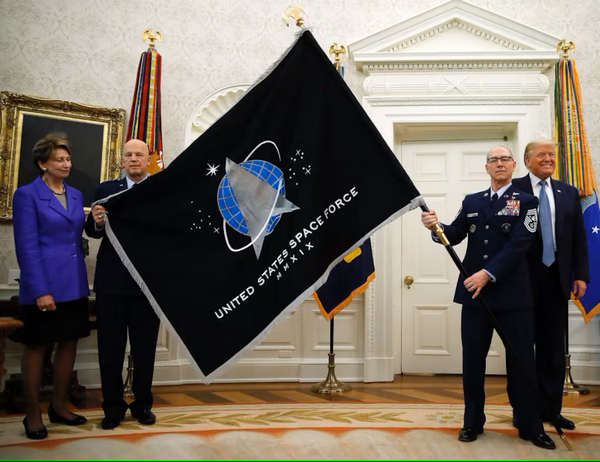
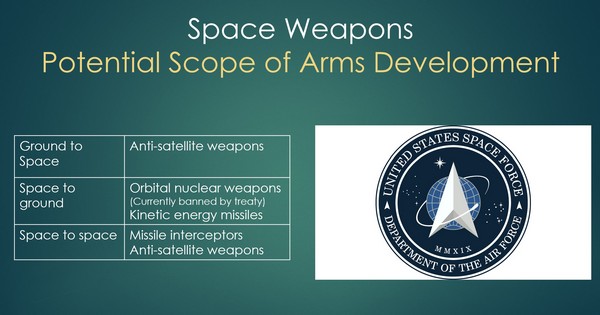
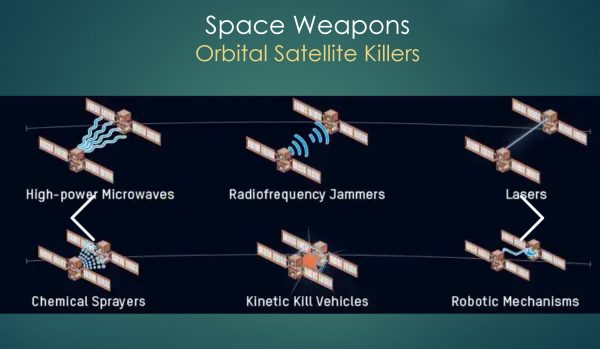
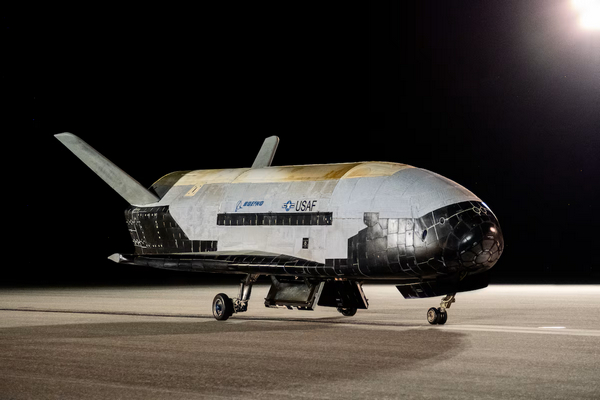
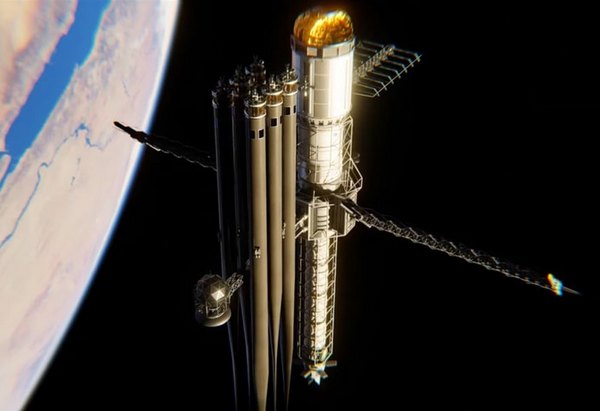
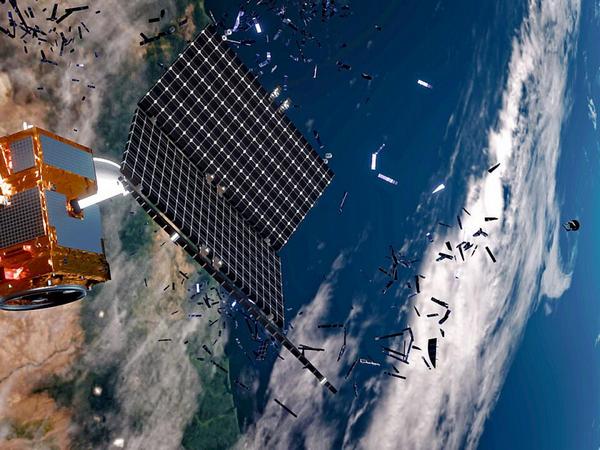
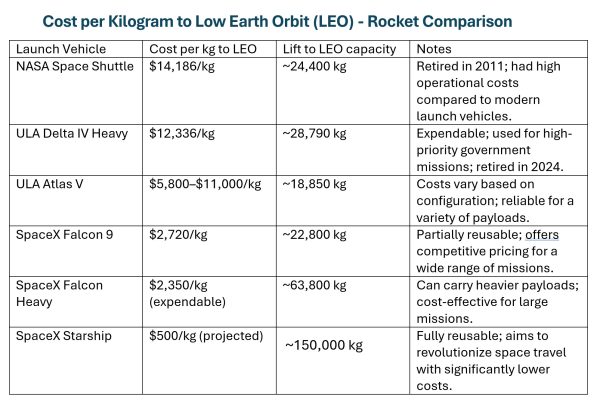
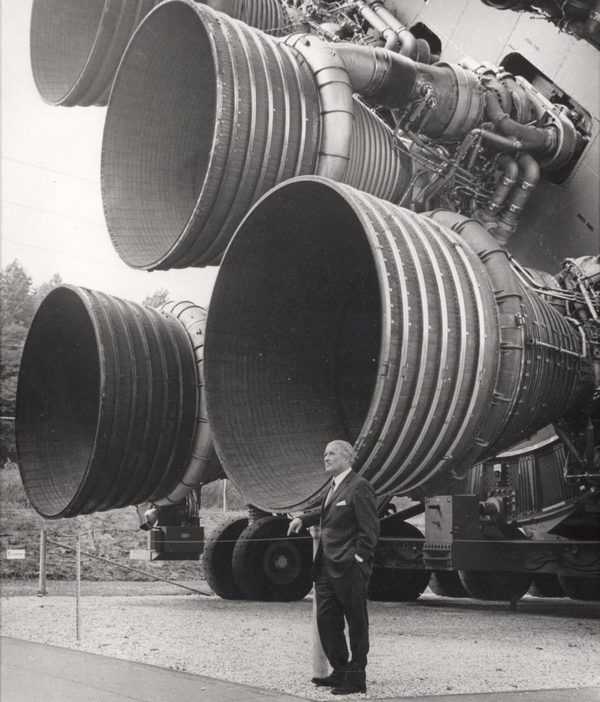
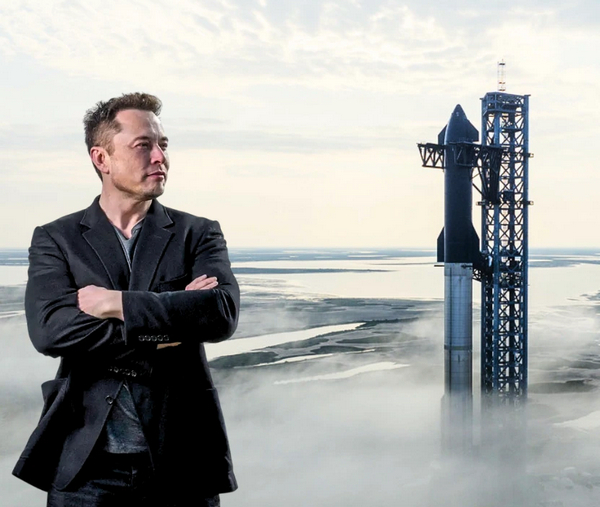


From Tom Lehrer, 1965
Spoken introduction:
And what is it that put America in the forefront of
The nuclear nations? And what is it that will make it
Possible to spend twenty billion dollars of your money
To put some clown on the moon? Well, it was good old
American know-how, that’s what, as provided by good
Old Americans like Dr. Wernher von Braun!
Gather ’round while I sing you of Wernher von Braun
A man whose allegiance
Is ruled by expedience
Call him a Nazi, he won’t even frown
“Nazi, Schmazi!” says Wernher von Braun
Don’t say that he’s hypocritical
Say rather that he’s apolitical
“Once the rockets are up, who cares where they come down?
That’s not my department!” says Wernher von Braun
Some have harsh words for this man of renown
But some think our attitude
Should be one of gratitude
Like the widows and cripples in old London town
Who owe their large pensions to Wernher von Braun
You too may be a big hero
Once you’ve learned to count backwards to zero
“In German, und Englisch, I know how to count down
Und I’m learning Chinese!” says Wernher von Braun
From Laugh In: Von Brauns new book is titled “We Aimed at the Stars and Hit London.”
“The countdown as we know it, 10-9-8-u.s.w., was invented by Fritz Lang in 1929 for the Ufa film Die Frau im Mond. He put it into the launch scene to heighten the suspense. ‘It is another of my damned “touches,”‘ Fritz Lang said.” (Gravity’s Rainbow, p.753)
Such a great song by Tom Lehrer.
Anywho, I think at present, the biggest saving grace here is that the ability to conceal weapons in space is limited enough, combined with our huge dependency on space communications that, absent WW3, we won’t see anything so dreadful in orbit at least going by the conflict in Ukraine.
Will Netanyahu or his religious chums be crazy enough to upset the apple cart if he gets his wider war? [family blog] I hope not.
Mein führer, I CAN WALK!!
There has been a long standing suspicion that Starlink is a front for an orbital nuclear bombardment system.
There are so many Starlink satellites that nobody can be sure which ones do what, and individually they are all large and heavy enough to carry sizable nuclear bombs.
Which provides a direct first strike capability.
The Outer Space Treaty the US has not formally exited, but given that it exited all the others, and that there are no rules in a total war, who is to say that they didn’t in fact put nukes in space already?
Which might explain why Russia is so reluctant to defend itself against NATO in the war
Only Israel has the right to defend itself.
I’d actually be surprised is the US and/or Russia don’t already have some of these systems in place
Agreed. That the Kessler effect would all but end the digital era is probably why we haven’t had active space warring to date.
Now Trump is in charge. Collateral damage does not seem to concern him.
re: legend of Wernher von Braun
German PhD Christopher Lauer in 2019 published a study paper on von Braun. He suggested that much of what “made” von Braun´s legend was smoke and mirrors and the true skills were with others. After all von Braun was a young greenhorn. In fact the influence and connections of von Braun´s father were key here, if I recall correctly.
So he was allegedly far from anything extraordinary.
The 50-page German-language study would be here on Lauer´s homepage:
Circumstances and prerequisites for Wernher von Braun’s entry into the Army Ordnance Office
https://christopherlauer.de/2019/01/12/bachelorarbeit-umstaende-und-voraussetzungen-fuer-wernher-von-brauns-eintritt-in-das-heereswaffenamt/
Its intention:
“(…)This paper argues that
Braun was not hired (…) because of his scientific knowledge, but rather due to circumstances that are explained in more detail below.(…)”.
There was a brief media uproar then. It was accompanied by an article by Lauer I believe in FAZ daily. Perhaps I can dig it up.
I haven´t followed up the story since. But it is odd how Braun in Germany in a way is still being “protected” like Albert Speer is.
The exact number of workers killed has not been examined. At Concentration Camp Mittelbau Dora, which was part of the Buchenwald complex, figures are between 16k-20k.
Parallel to V2 count in V1, which was the first cruise-missile, extremely inefficient as such however. Both systems were developed in rivalry to each other amounting to the most expensive military project in Germany.
V1 cost 3500-5000 Reichsmark a piece. V2 50.000 – 120.000.
Wehrmacht eventually paid the company Mittelbau Dora Ltd. 4,8B Reichsmark ordering 12.000 V2.
Around 3200 V2 were launched against Antwerp and London. Between 6000 and 13.000 got killed.
As the war is concerned all of this was extremely ineffective. Considering all the resources Wehrmacht was missing on the East Front e.g.
The first V2 launch against London on September (!) 8th 1944.
Lauer in 2022 wrote his PhD about the German Army Ordnance Office and how it picked up rocket technology in the 1930s. This is again in German, with an English abstract though (100 pages):
Rocket development at the Army Ordnance Office between 1930 and 1937 with special emphasis on the role of Wernher von Braun
https://christopherlauer.de/2022/01/13/masterarbeit-raketenentwicklung-am-heereswaffenamt-zwischen-1930-und-1937-unter-besonderer-beruecksichtigung-der-rolle-wernher-von-brauns/
I believe the last time I was at the Space Flight Center in Huntsville they still had a model of Von Braun’s office as one of the exhibits. Otherwise not much is said about Mr. V2. The Huntsville Redstone rocket was a reconfigured V2 since he brought all his cronies with him.
As for Speer, he was actually tried at Nuremberg but the Cold War got him a pass too. We’ve been talking today about the crazy that is Trump but the 1940s and 50s had more than their share of this. It remains to be seen whether Trump will be proclaiming “who knows where it comes down?”
“He suggested that much of what “made” von Braun´s legend was smoke and mirrors and the true skills were with others.”
So, yet another similarity between him and Musk …
My Daughter Rosetta will turn 25 this year,the USA has been at war every day of her life.
If I make it to the end of August I will be 72 years old.
The USA has been at war here or there for almost all of my life, perhaps there have been as many as three or four different years during my life when the USA has not been at war.
And now what’s called the Western World has abandoned any pretense of respecting what Tom Paine (That was the Alias I registered with the State of California many decades ago ) called “The Rights of Man”.
The Republic is gone, it is not coming back.
What’s left is a foul stench and a future of dystopian warlordism.
It took a while, I have watched the rot progress since I was in my teens.
What a sad end for the dream…
«The Republic is gone, it is not coming back.»
Alas, Tom, it was never really here. All our hope is that it should come for the first time, really.
Western World never cared about the rights of man, unless one considers most men to be not-really-men. It’s funny that one can tell the colour of someone’s skin just by reading.
I’ll note that if Kamala Harris runs for governor we have a good chance of having a Republican Governor.
If they Nominate someone with good hair who doesn’t obviously drool and who doesn’t go on long winded rants about revelations at every opportunity he/she (They/Them), (It?), could win.
The Cackler has demonstrated two important skills.
1) Raising $ from Oligarchs.
2) Raising $ from Oligarchs.
She’s Hillary with a tan, but stupid.
Incoming CME today, probably not strong enough to fry everything in orbit sadly. Ah well, keep swinging Helios.
PS checkout Gravity for an excellent on screen portrayal of Kessler Syndrome
A favourite novel of mine as a kid was “Space Cadet” by Robert Heinlein which centered around a group of new friends who were cadets to the Interplanetary Patrol. A major responsibility of this organization were nuclear weapons in space. Earth had a series of nukes orbiting around the world in polar orbits ready to be the final hammer in case somebody started to start a major war and this organization were responsible for them including their maintenance. I have no doubt that there are people in DC who would like to see precisely that as a way of keeping the whole world in line. The 2000 film “Space Cowboys” featured a defunct USSR satellite that had 6 nukes ready to hit Earth targets but now I think that that was projection. Point is, I could easily see the US attempt to have nukes in space as part of an effort for world dominance which means that perhaps the only way to avoid this is for another nation to setup a Kessler Effect. Yes, we would lose space for centuries if not thousands of years but who wants to look up at the night sky and follow a point of light in the sky that you know is an orbital nuke-
https://en.wikipedia.org/wiki/Space_Cadet
Fun fact. This 1948 novel even included a description of a mobile phone.
It all started with Dick Tracy’s Wrist Radio™. « it was kept from the public marketplace and given over exclusively to the use of law enforcement. »
I believe that is was also in that novel that featured a ring watch. Instead of a full band around your wrist holding a watch to tell the time it was just a ring that displayed you the time. One of those things that were never actually developed but could have been.
Ah, but it was quite real: https://en.wikipedia.org/wiki/Fractional_Orbital_Bombardment_System
When I read articles like this, I hasten to think that the world is presided over by a small cadre of sociopathic chimps who have managed to rise to the top with only the most modest endowments of intelligence and wisdom imaginable. They decide, but they are themselves constrained and reliant on sclerotic and dumb institutions governed by blind, self-serving ideologies and for which, when the most horrific nightmare for the future is presented, can think only “but can we develop it before the Chinese/Russians/Americans/insert-enemy-here?”
KD: I hasten to think that the world is presided over by a small cadre of sociopathic chimps who have managed to rise to the top with only the most modest endowments of intelligence and wisdom imaginable.
Why would anyone ever doubt it? It was obvious to me when I was a child.
The take on Musk is, well, interesting.
While he had early success with SpaceX, and they are still proficient at launching low Earth orbit objects (mostly their own Starlink devices), overall they have been an increasing failure. Starship has been a massive disappointment and NASA had to provide an additional billion in funding for the Artemis III program that has yet to reach a major milestone for reaching the moon. And the dear Moon project was cancelled due to Starship issues as well.
And Mars? Trump is more likely to beat China with his misguided tariffs than Musk reaching Mars.
Musk is a grifter and conman, who lucked into some good companies which he has slowly destroyed over the past decade. Nothing more.
One thing Elon Musk clearly learned from Wernher von Braun: if you want to be a Nazi, be “our Nazi.”
Arthur C Clarke once remarked that the way to destroy a satellite was to orbit a bucket of nails and wait for one of them to hit it. If the cloud of nails missed by a kilometre on the first orbit, it would hit on the second, or the third.
Any time an anti-satellite war breaks out, low-earth-orbit will be uninhabitable by satellites for decades because of fragments floating around. Bye-bye, satellite communications. Of course you could put stuff in higher orbits, but usually that requires too much power for trustworthy communications.
As to kinetic kill weapons from space to ground, why put them in orbit when you can launch them with ICBMs? And striking at people with such weapons would have to be restricted to non-nuclear powers, most of whom could surely be struck with ordinary bombs. I smell a boondoggle here.
Orbital kinetic bombardment systems would have a much shorter flight time than an ICBM, and the launch would be undetectable. With a large enough deployment, any target on Earth could be destroyed within minutes.